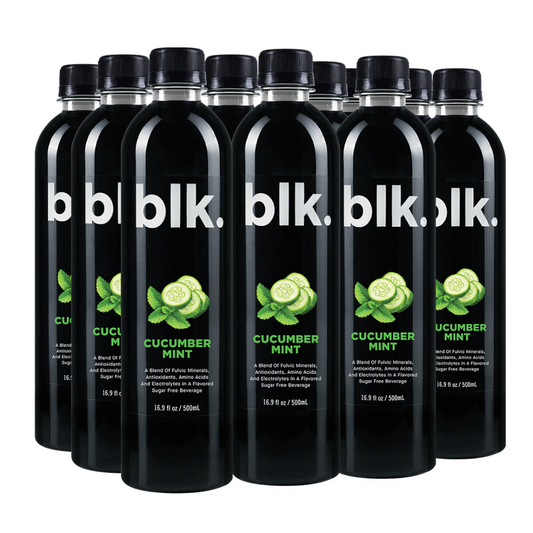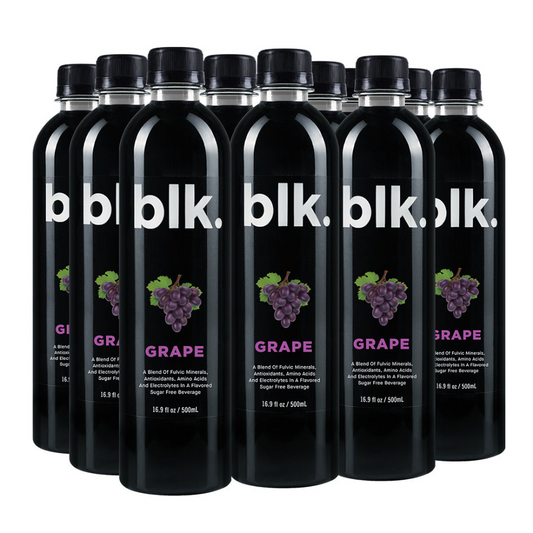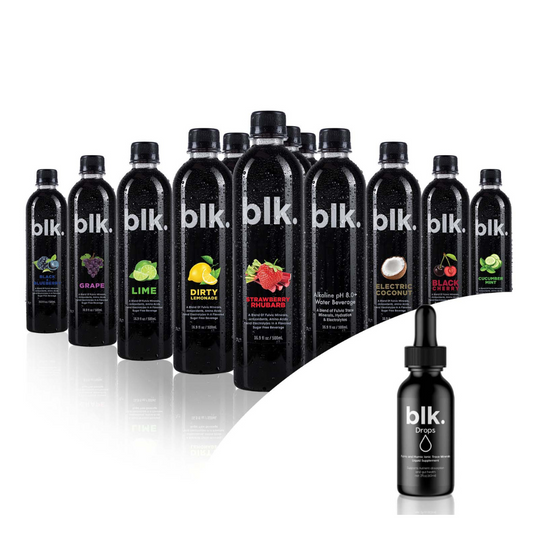
DIY Protein Bars: Easy Recipes to Try
This article seeks to give more information about the following:
- The Benefits of DIY protein bars.
- What you need to make your own protein bars.
- Sample recipes for making protein bars at home.
Are you tired of going for store-bought protein bars when you need a quick snack? If so, why not try healthier and more affordable homemade protein bars?
While such pre-packaged protein bars are undoubtedly convenient, they can also be loaded with sugars, artificial sweeteners, allergens, and other undesirable ingredients. With simple ingredients and basic kitchen equipment, you are one step away from making delicious and nutritious protein bars that suit your preferences. In this article, we will look at some of the simple do-it-yourself (DIY) protein bars recipes you can try.
Benefits of Making Your Own Protein Bars
Before we delve into the nitty-gritty of making your own protein bars, one might ask, why bother going the extra mile? Here are some of the reasons that make homemade protein bars favorable options.
Control Ingredients
Some ingredients found in commercial varieties of protein bars are used out of the need to be cost-effective. They may use artificial sweeteners and added preservatives, predisposing people to health risks. Such risks can be evaded by taking control of your ingredients and eliminating such substances.
With homemade protein bars, you can pick fresh ingredients and high-quality protein sources of your choice. They can either be plant-based or animal-based, depending on your dietary restrictions. You can also control the amount of sugar you want in your bar and leave out ingredients that do not suit your liking.
Cost-Saving
Making protein bars at home can be cost-effective in the long run because you can make a batch of them rather than buying them individually. Some of these protein bars are overpriced, and buying the ingredients in bulk and making your own might save you a considerable amount of money.
Taste Customization
The good thing about homemade protein bars is that you dictate the final flavor. Taste is subjective, and you may choose different flavor combinations of your liking—no need to wait for the manufacturer to come up with your preferred flavors.
Protein Sources for DIY Bars
Now that you know why DIY bars are favorable options, let's consider some of the best protein sources for making delicious and nutritious protein bars.
Plant-Based Protein Sources
Generally, plant-based protein powders are good options for making protein powders, and there are numerous vegan protein powders that you can pick for your recipes. Alternatively, you can opt for protein-rich whole foods such as nuts and seeds.
Vegan Protein Powders
Vegan protein powders are supplements derived only from plant-based sources designed to increase a person's protein intake. Some of the vegan protein powders include the following;
Pea Protein Powders
Pea protein powder is derived from dried peas, which are processed and concentrated to increase the protein content. Pea protein is also rich in other nutrients, such as fiber, which helps with healthy digestive system and gastrointestinal issues.
Hemp Protein Powders
Hemp is a plant of the cannabis species, and hemp protein is obtained from the hemp plant's seeds. Hemp seeds are excellent protein sources because they have all the essential amino acids, making them suitable for muscle building, muscle repair, and weight management. Hemp protein powders have a gritty taste, which makes them suitable for making protein bars. Hemp protein is also easy to digest because of its high fiber content.
Brown Rice Protein Powder
The first thing that comes to mind when thinking about rice is starch. However, rice also has high protein content, and a study published by the National Library of Medicine indicated that rice protein could be as effective as soy and whey protein.
Nuts
Nuts make delicious snacks on their own and can be even better when used as ingredients in protein bars. They are protein-rich options that will satisfy you for long hours and help you achieve your fitness goals.
Some protein-rich nuts that are excellent ingredients for homemade protein bars include almonds, pistachios, cashews, and peanuts.
Seeds
Seeds are excellent protein sources and have other valuable minerals and vitamins, making them well-suited for protein bars. Some protein-rich seeds include flaxseeds, chia seeds, and pumpkin seeds.
Essential Equipment for Making DIY Protein Bars
Making protein bars at home should be relatively easy, and it only requires basic equipment, most of which you probably already have or can improvise to serve the same purpose. You may need to add a few things if you are a perfectionist and want your protein bars to turn up perfectly. Here are some of the essential items you'll need:
Food Processor
We have already seen that nuts and seeds are excellent protein sources for your protein bars, and this is where the food processor comes in handy. A food processor will help you grind the nuts and seeds and mix them well with other ingredients. Although it is not absolutely necessary, food processors make the work more efficient and save you a lot of time and effort.
Mixing Bowl
A mixing bowl is necessary to combine all your ingredients. It should be big enough if you are making large batches to allow room for mixing all the ingredients. You should have at least two different sizes to cater to recipes that require separate mixing of ingredients.
Measuring Cups and Spoons
To make the best protein bars, you'll have to be precise on the measurements to add the correct amount of ingredients.
Baking Dish
The baking dish would be where you put your protein bar, and it determines the shape. A rectangular or square baking dish is a preferred type by many people.
Rubber Spatula
It is a handy tool for efficiently mixing the ingredients and smoothing out the mixture on the baking dish.
Parchment Paper
Parchment paper is used for lining the baking dish to prevent the protein bar from sticking, especially if you use sticky ingredients like honey.
Steps For Making Protein Bars at Home
Now that you are all set with all the necessary equipment, here are a few things you should keep in mind while preparing protein bars.
Choose the Recipe and Review the Ingredients
The initial step when making protein bars at home is choosing the right recipe. Hundreds of recipes are available online, and you can easily look for one that suits your dietary needs and taste preferences.
After skimming through the recipes, you can even come up with one of your own if you are creative enough. Below, we give you some of the best recipes to pick from.
Once you have settled on your preferred recipe, review the ingredients to ascertain whether you have all the ingredients or if there are ingredients that you may be allergic to.
After choosing a recipe and reviewing ingredients, assemble all the necessary tools, and you are good to go!
Start Small
You should always start with small batches, especially if it is a recipe you have never tried before. You don't want to end up with a whole load of protein bars you won’t eat. Try and taste test before making larger batches.
4 Easy DIY Protein Bar Recipes to Try
No-Bake Chocolate Protein Bars
This is a straightforward recipe, unlike many other recipes out there. You can pick any protein powder you prefer, but chocolate-flavored protein powder is best suited for this recipe.
Ingredients
- 1 cup rolled oats
- 1 cup chocolate whey protein powder
- ¼ cup dark chocolate chips
- ¼ cup unsweetened almond milk
- ½ cup natural peanut butter
- ⅓ cup honey
Directions
- In a large mixing bowl, combine the rolled oats, dark chocolate chips, and chocolate whey protein powder.
- Add the peanut butter, honey, and unsweetened almond milk into the mixing bowl and stir using a spatula to combine all ingredients.
- Put the mixture into the baking dish and smoothen using the rubber spatula.
- Refrigerate for at least 30 minutes or until firm.
- Cut into bars and enjoy.
Peanut Butter Protein Bars
Ingredients
- 1 cup natural peanut butter
- ½ cup vanilla whey protein powder
- 2 cups old-fashioned rolled oats
- ½ cup honey
- ¼ cup mini chocolate chips (optional)
- ¼ cup chopped peanuts (optional)
Directions
- Place parchment paper in a baking dish.
- Mix and combine the rolled oats and vanilla whey protein powder in a large mixing bowl.
- In a separate mixing bowl, stir together the peanut butter and honey until well combined.
- Pour the peanut butter mixture over the oats and protein powder and stir until well combined.
- Stir in the mini chocolate chips and chopped peanuts (if using).
- Press the mixture firmly using a rubber spatula into the prepared baking dish.
- Refrigerate for at least 30 minutes or until firm.
- Remove the bars from the baking dish using the parchment paper to lift them out.
- Cut into bars and store in an airtight container in the refrigerator.
Blueberry Protein Bars
Ingredients
- 1 cup blueberries
- 1 cup whole oats
- 1 1⁄2 cups vanilla protein powder
- 4 tablespoons honey
- 1 cup skimmed milk
Directions
- Preheat the oven to 350°F.
- Put the oats in the food processor to chop them up.
- Mix all the ingredients in the mixing bowl.
- Place parchment paper on the baking dish to prevent the mixture from sticking.
- Put the mixture in the oven and let it bake for 25 minutes.
- Let it cool for some minutes, then cut it into protein bars.
Apple Pie Protein Bars
Ingredients
- 1 cup finely chopped apple
- 1 cup unsweetened applesauce
- ¾ cup vanilla protein powder
- 1 cup oat flour
- ¼ tsp nutmeg
- ¼ cup maple syrup
- 1 tsp vanilla extract
- 1 tsp baking powder
- ½ tsp sea salt
- 1 tbsp cinnamon
Directions
- Preheat your oven to 350 degrees F.
- Line your baking dish with parchment paper to prevent sticking of the mixture.
- Mix to combine the oat flour, protein powder, nutmeg, allspice, baking powder, cinnamon, and sea salt in a large mixing bowl.
- In a smaller bowl, mix the apple sauce, apple, maple syrup, and vanilla extract.
- Pour the contents of the smaller bowl into the larger one and mix to combine.
- Pour the contents into the baking dish and bake for 25 minutes.
- Wait for it to cool, then proceed to cut it into bars.
Tips for Storing and Transporting Homemade Protein Bars
Storing and transporting homemade protein bars properly can help to maintain their freshness, texture, and flavor. Homemade protein bars require special precautions because they do not have preservatives to keep them fresh for longer.
Storage
Homemade protein bars should always be put in an airtight container and stored at room temperature to stay for up to a week. Keep the container away from moisture and direct sunlight.
Refrigerated bars can stay good for up to two weeks. You can wrap them individually in a freezer if you want them to stay for up to three months.
Transporting
Place them in airtight containers or sealable bags to maintain their freshness.
Conclusion
To sum it up, making your own protein bars at home is an excellent way to ensure you control the ingredients used. DIY protein bars are also cost-effective, and with simple kitchen equipment and a few ingredients, you can make your own protein bars that suit your preferences. With many different recipes, you can come up with delicious and nutritious protein bars to help you achieve your fitness goals.
Frequently Asked Questions
-
Can I make these protein bars without a food processor?
-
What are some other sweetener options besides honey?
-
How long do homemade protein bars last in the fridge?
-
Are these protein bars suitable for people with nut allergies?
-
How do I make these protein bars suitable for people with diabetes?




